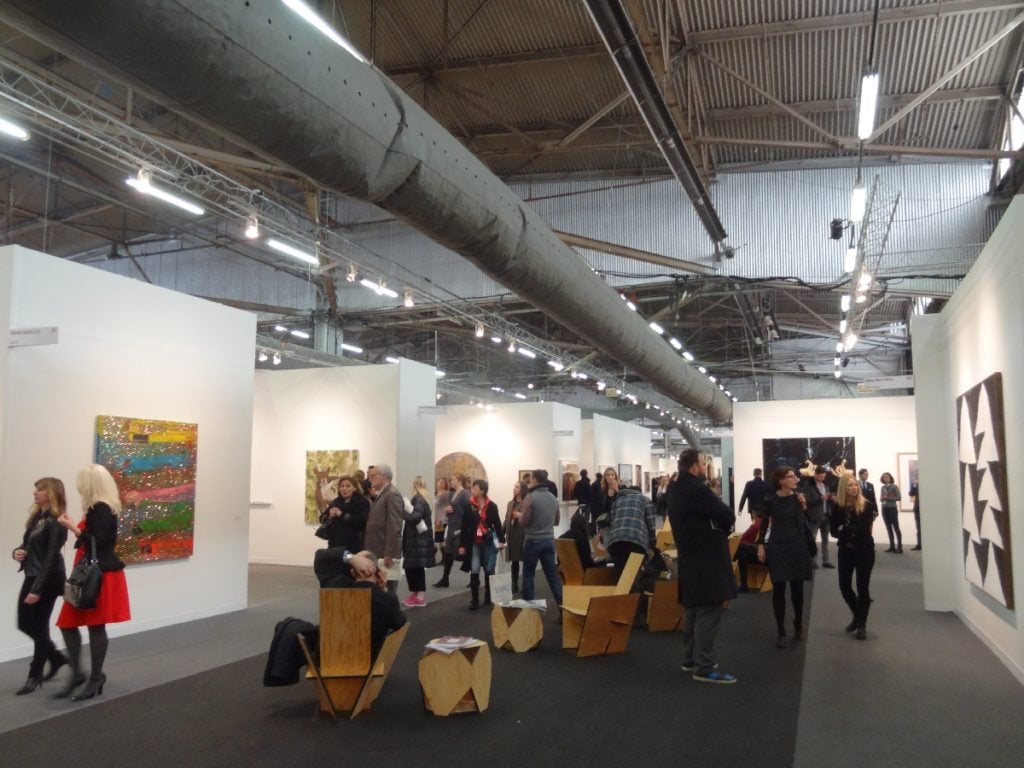Art Fairs
8 Tips For Buying Art at an Art Fair (Hint: Try These Out at the Armory and ADAA)
A guide to buying at art fairs, for experienced collectors and novices.

Photo: Benjamin Sutton
A guide to buying at art fairs, for experienced collectors and novices.

by
Astrid T. Hill

In many ways, the sales power and popularity of art fairs has been reshaping the role of everyday gallery life. It’s not uncommon these days to hear about galleries selling more works at art fairs than at gallery exhibitions. Indeed, a fair’s fast paced nature and the sheer number of works available for sale offer a unique opportunity for a collector, whether a renowned one or a “new kid on the block.”
But attending a fair can be overwhelming for art buyers. Below are my eight tips for buying art at an art fair.
1. Research – Review the schedule of upcoming art fairs and choose the one that holds the most promise, both in terms of your collection and interests (i.e., location of the art fair, type of art, representative artists, etc.). Once you have selected the best fair for you, look at the schedule and events on offer, as well as the participating galleries and artists, and mark which ones pique your interest. A quick Google search on the galleries and artists will go a long way.
2. Network – These fairs are a great opportunity to develop relationships with the art dealers and the galleries. Be selective. For example, if you want to buy a Christopher Wool painting in the primary market, the gallerists at Luhring Augustine would be the experts to speak to on all matters pertaining to Wool and his works of art. So don’t be shy – introduce yourself, ask questions, and try to learn as much as you can about the artists that interest you, their artistic processes, and the galleries that represent them.
3. Be open – Having an open mind is the best way to take advantage of all the offerings at an art fair. Be open to new genres, ideas, artists, perspectives, galleries, and relationships. Both market and individual tastes change and evolve, so don’t rule out an artist, gallery, or style of art that you may have disliked in the past. You might surprise yourself.
4. Ask questions – Don’t be afraid to ask for the background and price of an interesting work of art. Inquiring about a piece will indicate which artists are “hot” and in high demand, and which works are still available or have already been sold. Whether or not you are interested in purchasing the piece, you will leave with a better perspective on the art market and current trends. And remember, there is usually some wiggle room, so be prepared to negotiate.
5. Take photographs – Although it may be frowned upon, snap away! Take pictures of pieces that you love—whether they are within your price range or not. These photos can be used as inspiration and a useful resource during the creative process of forming a new collection or enlarging an existing one. Looking back over photos will help to refine your taste, highlight specific artists’ works or genres of interest, and further develop your art sensibility.
6. Be confident – At an art fair, it is the collector who is in the driver’s seat. Although some gallerists may seem pretentious or unapproachable when presented with a visitor whose name or face they do not recognize, most actually welcome the chance to talk about their artists, and most enjoy sharing information about the works in their booths. Speaking with a gallerist will not only shed more light on an artist and the artworks on display, but also enable you to establish a relationship with the gallery and its representative. Don’t be intimidated.
7. Take a break – Most fairs last for at least a couple of days, so don’t feel pressured to visit an entire fair at one go. Have coffee with a friend to discuss your experiences, share photos and gossip about the current “hot” artist(s). It’s always helpful to compare notes on which artworks or booths you found interesting and learn the takeaways and perspectives of a peer. After recharging your batteries, either go back for a second round, or call it a day and tackle the fair at a later time. Stepping away from the art fair atmosphere will allow you to think about what you have seen, revisit the fair with fresh eyes, and gain more clarity and perspective on which pieces would work best for your collection.
8. Most important, enjoy yourself!